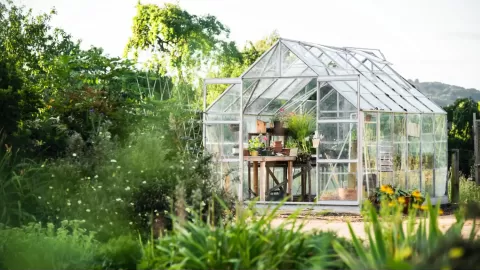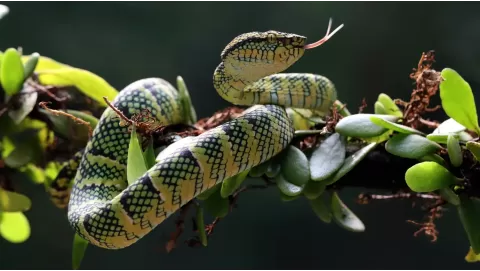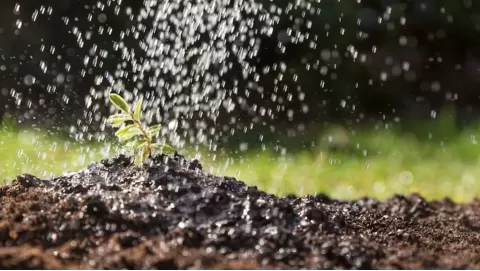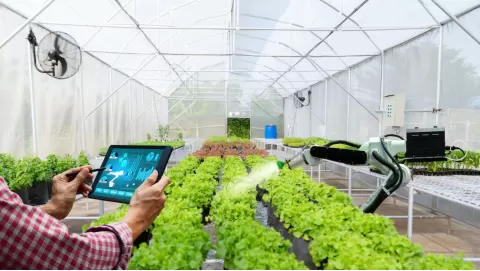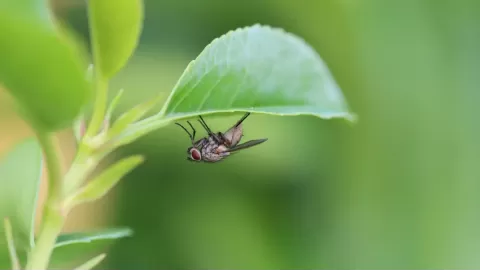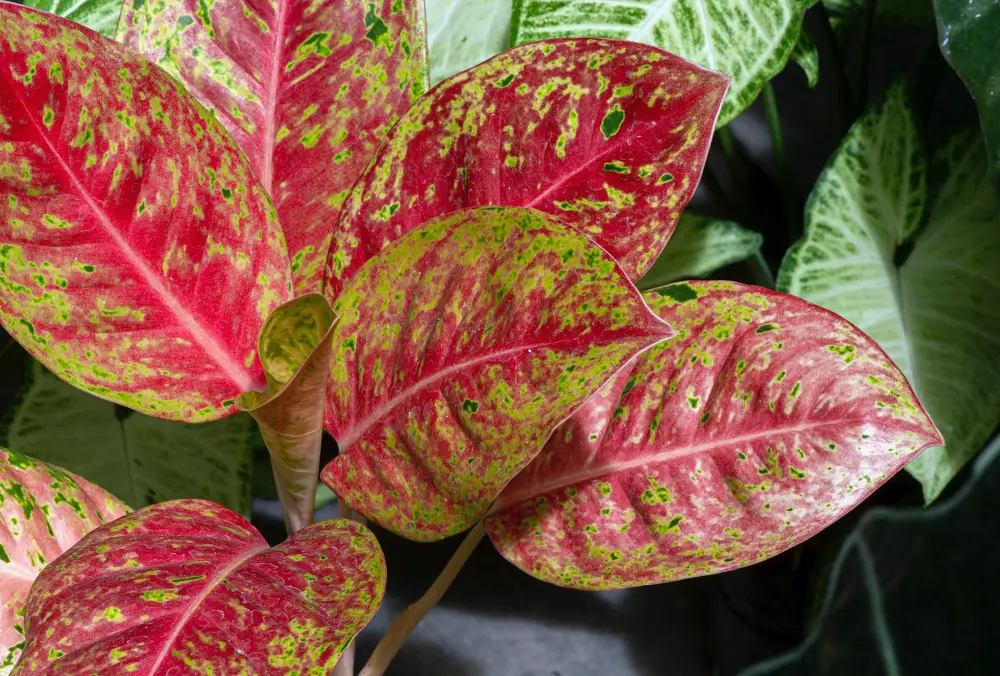
Chinese Evergreen care: A guide to aglaonema success
One of the easiest to care for but still aesthetically pleasing types of plants is the Chinese Evergreen (Aglaonema). This ornamental plant is well known for its stunning tropical leaves, which come with various bright patterns and colors, making it perfect for indoor use. With its tropical styling and low-maintenance upkeep, the Chinese Evergreen is great for beginners and unfortunate areas with lower light conditions.
While they can grow tall — as much as 3 feet — Chinese Evergreens grow slowly, which makes them a good choice for a desk or shelf in small spaces. It will bring a little greenery to the space without overwhelming it. As they develop, their rounded shapes fit well into corners. Because they grow slowly, they need repotting only every 2-3 years and are happy in pots that are barely large enough.
Growcycle offers a wide variety of gardening products to help you make this Chinese Evergreen healthy and able to do its thing! They provide everything you need to feed this Aglaonema and help it flourish indoors:
Related: Queen of the Night Flower care: Growing epiphyllum oxypetalum indoors
Types of Chinese Evergreen Plant
Chinese Evergreens are also known as Aglaonema and have varieties with their own special charm. Here are five different variations of this amazing plant:
- Silver Queen
Silver Queen is grown extensively in nearly all homes. It has long, slender leaves on all sides that form patterns of dark green and silver. If you asked me what the biggest trait they can share is, it is resilience!
It bloomed in 2023 and continued to thrive, at the same time sitting about three feet away from a frosted WC’s western-side window. Due to the Silver Queen's flexibility, it works well in all sorts of indoor environments.
- White Joy
White Joy is a new and less common variety of Chinese Evergreen, which is visually stunning. Its pure, creamy white leaves surround a deep green center with dark green speckling that skirts the edges.
This plant requires a bit more light than other Aglaonema varieties to keep its vivid hue. Placed a few feet away from an eastern window where it thrives, its distinctive foliage is on display.
- Red Siam
For gardeners who love a plant that becomes bright and rich shades at any time of the year, choose Red Siam for an impressive selection. It is distinguished by its red-edged leaves dappled with green, yellow, and pink stems that brighten it even more.
This variety likes a little more light than its all-green cousins. Located a few feet from its sunny south-facing window, this plant thrives and shows its vibrant colors in every room that it inhabits.
- Diamond Bay
Diamond Bay has big, long spearhead-shaped leaves that make any room look incredible. Each leaf has a light silvery green/grey central part, which covers a little over half its width and stretches from one end of the leaf to the other, with rich dark green edges.
This dramatic contrast makes it more desirable. It does its best work about three feet from an east- or northeast-facing window, giving it enough light to keep it looking fresh year-round.
- Lemon Mint
A fairly new variety with a unique foliage that immediately draws attention! Its leaves are usually set with splashes of silver and veins in shocking green and yellow. This attractive, colorful foliage has been loved by Chinese Evergreen fans for bringing splashes of color to every indoor ambiance.
Essential Care Tips to Thrive Chinese Evergreen
There are few places that this Chinese Evergreen wouldn’t work since the adaptability of this plant to just about any part of a building. Some basic care techniques keep this resilient plant going:
1. Light
Chinese Evergreen plants can grow in a range of low to bright indirect light. They also thrive in artificial light, so they are perfect for work or even common areas like shopping malls.
Those with brighter colours or more striking patterns, like the ‘White Joy’ Aglaonema, however, thrive in a bit of extra light. These plants can survive in lower light conditions, but their colors will fade or become blurry over time.
To see the best benefits of sunlight on Chinese Evergreens, you need to make sure that their leaves are clean. Dust blocks light reaching the leaves, thereby restraining photosynthesis in plants. Use a lint-free cloth that is slightly wet but never cleaned with detergent. Each leaf can be carefully wiped one by one to efficiently clean the dust and protect the beauty of the plant.
2. Humidity
Chinese Evergreen (Aglaonema) with low humidity cannot survive for a long period. It may do better in the bathroom, where humidity is naturally high. It may only survive in dry areas as more humidity benefits this plant.
Low humidity cannot sustain Chinese Evergreen (Aglaonema) for a long time. It might fare better in a bathroom, where humidity levels are inherently high. More humidity is better for this plant, so it may only survive in drier areas.
It is advisable to keep the fluid balanced by using an extended misting in a spray or humidifier or positioning the flower in a wet room, along with your bathtub, kitchen, or laundry room. These techniques allow the plant to stay alive and well, even in a desert environment.
3. Watering
It’s okay to allow the soil to dry when growing, as this plant handles drought pretty well. Or to put it another way, if growers occasionally miss a watering, it’s not an issue for this plant. When watering, give the plant a deep soak. Then, let the pot drain thoroughly before setting it on its saucer again. If the plant looks wilted, it probably needs water.
During the production season (spring and summer), water the plant every week. You can get lower watering frequency during the months of winter. Overwatering usually comes with yellowing leaves; let the soil dry before introducing more water.
4. Fertilizer
You want to feed them slow-acting pellets or liquid house plant fertilizer at the start and end of every growing season. Because their metabolism is in full swing, they need the necessary minerals when this happens.
Or, you can mist with a water-soluble fertilizer monthly during the spring and summer, being careful not to overdo it. In this case, sufficient nutrients will remain in the soil to support continued plant development. So avoid over-fertilization as it will adversely affect the overall health of the plant.
5. Soil
While the Chinese Evergreen is adaptable to soil types, a well-drained, slightly acidic soil will provide the best growth conditions. Sand or perlite is best if the soil does not drain well. Also, make sure the pot has plenty of drainage holes to prevent water from sitting at the bottom. Taking care of their root drainage is simply crucial, as it will help them avoid problems like rotting roots.
Techniques to Grow Chinese Evergreen
Here are some common techniques to successfully grow the Chinese evergreen plants:
Repotting
Chinese Evergreens are slow-growing plants, so they’ll only need repotting every 2-3 years. However, if the soil composition is updated, even if the plant remains in the same pot, it is still helpful because all these add to nourish and support its health.
Generally, aglaonema prefers to be kept in a small pot. A smaller pot also eliminates over-soiling, which creates too much water retention and causes root rot. When repotting, use the same size or larger container, and remember to use fresh soil as plant food for the new transplant.
Propagation Method
Dividing your plant is the best way to propagate a Chinese Evergreen (Aglaonema) plant. It will produce new plants with the least distress to the original plant. These are the steps to follow when propagating Aglaonema:
- Remove the Plant from the Pot: Carefully take the plant out of its pot and break down the soil that surrounds its root ball. That helps expose the roots without damaging them.
- Choose and Divide a New Shoot: Find the shoot or small part at the edge of the root ball. Carefully work this shoot away from the primary root ball, taking care not to disturb the roots too much.
- Pot on the New Shoot: Put the split shoot into a new pot with fresh soil. Drained and aerated soil in the container is needed for new plant growth.
Pruning
As a Chinese Evergreen (Aglaonema) matures, it stretches out and can drop some leaves, reducing its fullness. Regular pruning benefits it and keeps it fluffy and healthy. Use clean and sharp scissors or pruning shears so as not to infect the plant.
Then, take a look at the areas where the plant became spindly or where leaves were lost. Use some tools and trim right beneath a leaf node, which is the site where a leaf connects to the stem. Trims should occur just below these nodes, leaving new growth to shoot out of the areas you pruned, becoming dense and vibrant.
Removing Flowers
Aglaonema can produce flowers in spring or summer. These flowers are known as spadices and are hidden beneath a creamy hood-like structure.
But the flowers can be plucked off, so that they don't take attention away from the foliage. Deadheading the flowers can re-focus the plant’s efforts on producing more new growth and maintaining optimal fitness faculties.
Common Problems and Solutions of Chinese Evergreen
In general, Chinese Evergreen is a hardy plant, but it can have some common problems as well. Here are some major ones:
Curling Leaves
Curling leaves is one of several common care problems of Chinese evergreens, but for the most part, the plant does not usually have any serious problems. Common causes of leaf curl include temperature fluctuation, lack of moisture, and under watering. If the edges of the leaves curl upward toward the center, it is a sign that the plant is stressed.
To solve this issue, measure the humidity around the leaves that have curled of a plant. For its part, the grower sets a pebble tray filled with water next to the plant or runs a humidifier to raise humidity levels. In addition to this, they must maintain the plant free from drafts in warm places since these also aid in curling the leaf process. Remove dried-up brown leaves to direct that energy into fresh, healthy growth.
Burnt Leaves
If a Chinese evergreen’s leaves are starting to brown and crisp up on the edges, it may be that light is hitting them directly. These leaves tend to burn easily in intense direct light, which is what creates the “ugly” brown tips.
When it comes to dealing with this, simply find somewhere else that does not get full-on all-day sunshine or even filtered light instead. Placing it somewhere with mellow and dispersed light will maintain its health without inflicting more destruction. Keeping direct sunlight away from the plant will keep the leaves attractive and the plant overall healthy.
Yellow Leaves
Yellowing Chinese Evergreen plants may be wet. They prefer to dry out between watering. To avoid this, let the soil’s top inch dry before watering again.
Also, the right pot size matters. Select one that is no wider than 1-2 inches wider than the rootball. If pots are too large, they hold excess moisture, causing root rot and the yellowing of leaves. So, regular watering and good pot sizes will support plant health.
Pests and Diseases
Chinese Evergreens may still suffer from insect issues, most often aphids, mealybugs, and whiteflies. This is why, whenever growers see these pests on plants, they must act to preserve their health.
First of all, keep the infected plant separate so that the bugs do not transfer to other plants. Next, use rubbing alcohol on the tip of a cotton swab to wipe off the insects from cracks and the undersides of leaves. If growers wish for a more thorough treatment, try using Neem Oil, which can kill many types of pests while being beneficial for the overall health of the plant.
Safety From Pets
Some Chinese Evergreens (Aglaonema) are mildly toxic to both animals and humans when ingested. You need to be careful with this risk, but many people, some with pets, have been able to have these plants in their houses with no incident. For instance, in the owner’s house, there are five Chinese evergreens, and the cats have not shown an interest in chewing on them.
FAQs
Does the Aglaonema plant prefer a large Pot?
Aglaonema does not require a big pot and likes to be slightly root-bound. Selecting a pot of the plant’s size helps maintain its favored somewhat dry conditions, thus avoiding too much water that may cause root issues.
Does Aglaonema plant like misting?
Aglaonema plants like humidity, but not by misting them. For instance, misting just adds moisture to the leaves for some time. On the other hand, a small humidifier can be used instead of misting to increase the level of humidity around the plant and ensure a uniform environment for it.
Do Aglaonema plants require direct sunlight?
Aglaonema plants should not be exposed to the blazing sun, which will burn their leaves. Therefore, it is advised that they are placed under bright but not direct light. More light is needed with lighter-colored variegation, whereas partial shade is good for darker green-leaved ones. Give it the right amount of light to keep Aglaonema alive and glowing.
The Bottom Line
Chinese Evergreen is an easy and rewarding plant to grow; it needs just the right amount of light, an ideal watering schedule, and very basic maintenance practices. Explore Growcycle gardening products and tools, from potting mix to fertilizer, to ensure the Chinese evergreen plants get the nutrients they need.
Disclaimer: Information in this material should not be taken as advice from legal, medical, financial, or any other form of professional advice.



